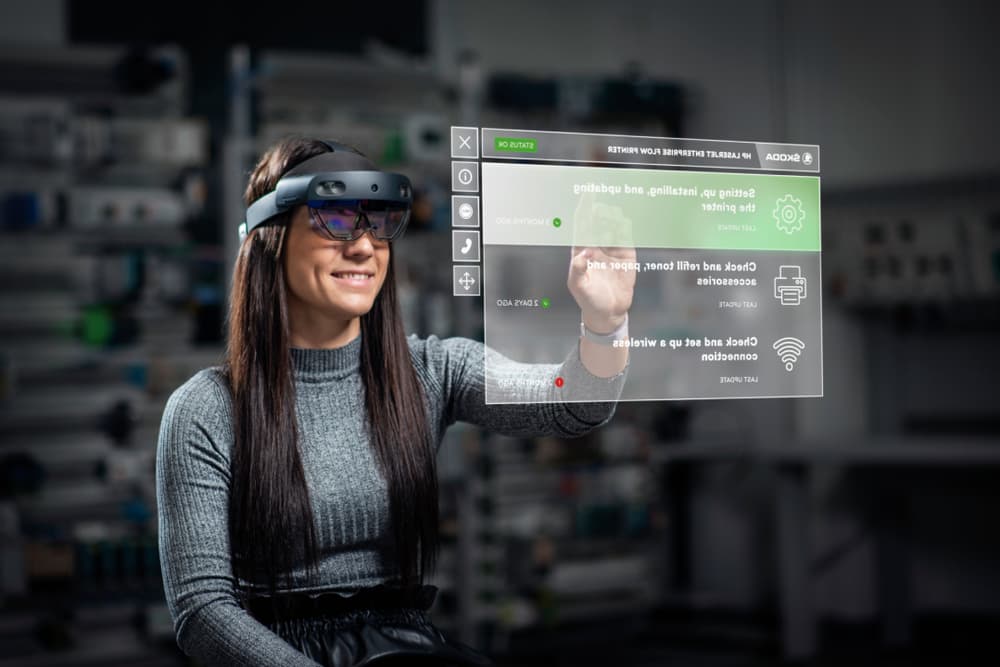Vision-as-a-Vital is an emerging HealthTech trend using AR-based eye exams via smartphones and smart glasses to detect cognitive, visual, and systemic health issues. It redefines eye care as a vital health metric, accessible on-demand and packed with diagnostic potential.
Vision-as-a-Vital: How AR-Based Eye Exams Are Redefining HealthTech
Written by Sumit Kaushik

Think about it: You're at home, wear your AR glasses, and within a few minutes, your eyes have been scanned, your attention quantified, and your state of mind evaluated silently—all without ever leaving your chair or making one appointment. No eye chart required. No dilation drops. No waiting room.
Now suppose that same test warning you of early symptoms of neurological disease, diabetic blindness, or simply chronic screen exhaustion. All of this, done in your own eyes—processed by computer intelligence, amplified by augmented reality, and tailored to your biology.
Welcome to Vision-as-a-Vital's dawn—a HealthTech revolution where your vision does not simply see; it says so much more about your inner health. With the unification of Augmented Reality, AI-diagnosis, and neuro-ophthalmology, today we are at a point where your vision is a vital biomarker—as important as your heart rate or blood oxygen saturation.
What Is Vision-as-a-Vital?
In short, Vision-as-a-Vital redefines eye care by holding visual function as an equivalent of blood pressure or body temperature as a vital sign. Vision-as-a-Vital uses Augmented Reality (AR)-based platforms—be it AR headsets or high-end smartphones—on which it conducts quick, precise, and painless eye tests that check everything from the pupil's response to light to tiny neurological reactions.
- Eye movement accuracy – Can your eyes track a moving target smoothly? Are they exhibiting tremors characteristic of a neurological red flag?
- Focus speed & latency – How fast can your eyes adapt to shifting focal points?
- Pupil dilation & light reaction – Such reflexive reactions might indicate levels of stress, fatigue, and even mental alertness.
- Cognition-linked gaze behavior – Your eye movements might quietly indicate symptoms of ADHD, Alzheimer's, or anxiety.
- Retinal imaging – AR-driven scans can identify diabetic retinopathy, hypertension injury, or macular degeneration.
The end product is a handheld, predictive, and deeply personal health diagnostic device—one that goes into your pocket or on your face.
How Does It Work?
Step 1: AR-Based Testing Interface
The wearer wears AR smart glasses or launches an app to cast visual tests onto their field of view. The kinds of tests that can be done include drawing with moving points, following changing levels of brightness, or following virtual objects—turning the real world into an interactive test ground.
Step 2: Precision Eye Tracking
Advanced sensors integrated in the device track eye movement, blink rate, pupil size, and gaze accuracy. These micro-behaviors offer a neuroscientific snapshot of your physical and mental state.
Step 3: Live AI Analysis
Artificial intelligence cross-checks your eye data against millions of medical databases' patterns. It can identify slight discrepancies that signal early-onset diseases, visual impairments, or even emotional disorders.
Step 4: Instant Results + Cloud Sync
Your results are calculated in seconds and displayed on a basic dashboard. You can follow your trends, forward data to your ophthalmologist, or plug it into an overall health profile—all HIPAA-compliant and secured.
Why It's Hot: Eye Health = Whole Health
✅ 1. On-Demand Accessibility
Farewell waiting room at the clinic and costly hardware. These AR-based vision tests can be performed anywhere—workplace, home, or school, with common devices such as glasses or consumer-grade glasses.
✅ 2. Detection of Early Systemic Disease
The eyes are the window to the body. You can diagnose with Vision-as-a-Vital:
Diabetic retinopathy by slight alterations in retinal vessels
Parkinson's disease by saccadic disruption
Alzheimer's & dementia by delayed pupil response & gaze
Multiple sclerosis through optic nerve abnormalities
✅ 3. Mass-Screening in Schools, Businesses & Rural Clinics
The technology can democratize vision care, especially for resource-constrained environments. Schools can screen students for visual and mental issues; businesses can track screen fatigue to improve well-being; rural clinics can remotely diagnose valuable cases.
✅ 4. Transforming Cognitive & Emotional Well-being
Your eyes can tell you:
Stress and burnout (by unstable pupil behavior)
Sleep deprivation (through slow visual responses)
ADHD or autism spectrum markers (through distinctive gaze patterns)
Which makes it valuable not only in physical health, but also in mental health, education, and even office productivity.
Key Technologies Driven by the Vision Revolution
- AR Smart Glasses (e.g., Apple Vision Pro, HoloLens, Magic Leap)
- AI Diagnostic Engines (e.g., Eyetelligence, RetinAI, EyeCheck)
- Neuroadaptive Pupilometry Algorithms
- Edge Computing Chips for offline computation
- Encrypted Medical Cloud Platforms (HIPAA & GDPR-compliant)
What's Coming Up Next for Vision-as-a-Vital?
- Intelligent Contact Lenses that perform live diagnoses
- Neurofeedbacjk Games for ADHD and autism tracking
- Screen-Time Sensors that direct micro-breaks based on real-time fatigue signals
- Virtual Eye Clinics powered by AI
- Gamified Eye Exercises for children, seniors, and cognitive therapy
Conclusion: Your Eyes Are the API to Your Health
In a world that's dominated by screens, stress, and sensory overload, Vision-as-a-Vital provides a completely new kind of solution: a health diagnostic system that's always with you, always looking out for you, and constantly updating.
It doesn't merely test your vision—it inspects your overall well-being.
This isn't about a sharper vision.
It's about a sharper understanding of your health, through the eyes.